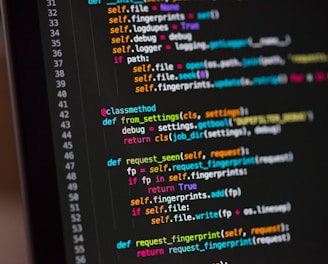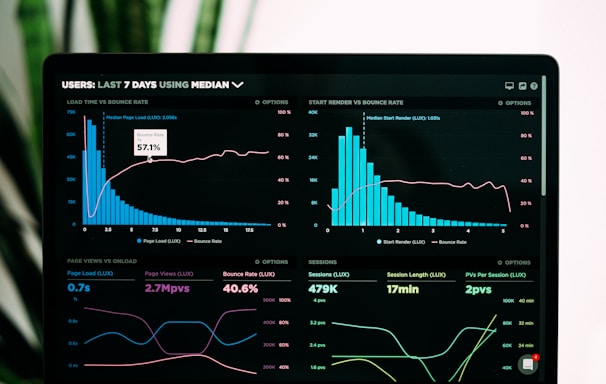
Our IT Training/Internship Program
Embedded System
Embedded systems are at the heart of many modern devices and technologies, often operating behind the scenes to perform specific tasks efficiently and reliably. These systems typically consist of a combination of hardware and software designed for a specific function or application. They are commonly found in everything from household appliances and consumer electronics to automotive systems and industrial machinery.


Robotics & IoT
Robotics: Robotics involves the design, construction, operation, and use of robots to perform tasks autonomously or with minimal human intervention. These tasks can range from simple repetitive actions to complex operations in diverse domains such as manufacturing, healthcare, agriculture, and exploration.
Internet of Things (IoT): The Internet of Things refers to the network of interconnected devices and objects that collect, exchange, and analyze data to provide valuable insights and enable new applications and services. IoT technologies enable smart, connected systems in various domains, including home automation, healthcare, agriculture, transportation, and urban infrastructure.




Python
Python is a versatile and widely-used programming language known for its simplicity, readability, and flexibility. Here are some key aspects and uses of Python
Overall, Python's ease of use, versatility, and robust ecosystem make it an ideal choice for a wide range of applications, from simple scripting tasks to complex data analysis and AI-driven projects. Its popularity continues to grow, making it one of the most in-demand programming languages in the industry.


Data Science
Data science is an interdisciplinary field that combines domain knowledge, programming skills, and statistical and computational techniques to extract insights and knowledge from data. Here are some key aspects of data science.
Data science has applications across various industries, including finance, healthcare, marketing, e-commerce, telecommunications, and cybersecurity. It plays a crucial role in informing decision-making, optimizing processes, improving products and services, and driving innovation and competitive advantage. As the volume and complexity of data continue to grow, the demand for skilled data scientists who can extract actionable insights from data is expected to increase.


Machine Learning
Machine learning is a subset of artificial intelligence (AI) that focuses on developing algorithms and techniques that enable computers to learn from data and improve their performance on a specific task without being explicitly programmed. Here are some key aspects of machine learning.
Machine learning continues to drive innovation and revolutionize industries by enabling data-driven decision-making, automation, personalization, and intelligent systems. As the field continues to evolve, advancements in algorithms, hardware, and data collection techniques are expected to further accelerate the adoption and impact of machine learning in diverse domains.


Java
Java is a widely-used programming language known for its portability, robustness, and versatility. Developed by Sun Microsystems (now owned by Oracle Corporation), Java was released in 1995 and has since become one of the most popular programming languages worldwide. Here are some key aspects of Java.
Overall, Java's combination of simplicity, reliability, and platform independence has made it a popular choice for building a wide range of applications, from small utility programs to large-scale enterprise systems. Its strong community support, extensive ecosystem of libraries and frameworks, and compatibility with existing systems make it a versatile and enduring programming language.


Web Designing
Web designing involves creating the visual and interactive aspects of websites, including layout, colors, typography, graphics, and user interface (UI) elements. Here are some key aspects of web designing.
Overall, web designing is a multifaceted discipline that combines creativity, technical skills, and usability principles to create engaging and functional websites that meet the needs of users and businesses alike.


Apps Development
App development involves creating software applications designed to run on various platforms, such as mobile devices, desktop computers, and web browsers. Here are some key aspects of app development.
Overall, app development requires a combination of technical skills, creativity, collaboration, and attention to detail to create successful and impactful applications that meet the needs of users and businesses.


Auto Cad
AutoCAD is a computer-aided design (CAD) software developed by Autodesk. It is widely used by architects, engineers, designers, and drafters for creating 2D and 3D drawings, models, and designs for various industries, including architecture, engineering, construction, manufacturing, and product design. Here are some key aspects of AutoCAD.
Overall, AutoCAD is a powerful and versatile CAD software that offers a wide range of tools and features for creating, editing, annotating, and visualizing 2D and 3D designs. Its intuitive interface, extensive customization options, and interoperability with other software make it a popular choice for professionals in various industries.


PCB Design
PCB (Printed Circuit Board) design is the process of designing the layout and connections of electronic components on a PCB. PCBs are used to mechanically support and electrically connect electronic components using conductive pathways, tracks, and pads etched from copper sheets laminated onto a non-conductive substrate.
PCB design is a complex and iterative process that requires expertise in electronics, engineering, and PCB layout software. Successful PCB design involves careful planning, attention to detail, adherence to design rules, and collaboration with PCB manufacturers and assembly partners.


PLC / Scada
PLC (Programmable Logic Controller) and SCADA (Supervisory Control and Data Acquisition) are two interconnected technologies commonly used in industrial automation and control systems. Here's an overview of each.
Overall, PLCs and SCADA systems play complementary roles in industrial automation, enabling efficient control, monitoring, and optimization of industrial processes and facilities. Their integration helps improve productivity, reliability, safety, and regulatory compliance in various industries such as manufacturing, energy, utilities, transportation, and infrastructure.
Get in touch
Address
Mayur vihar coloney Navalpur Bashi Shivpur Varanasi
Contacts
8299542278,8299643834
info@dynamicbraintechnology.com
